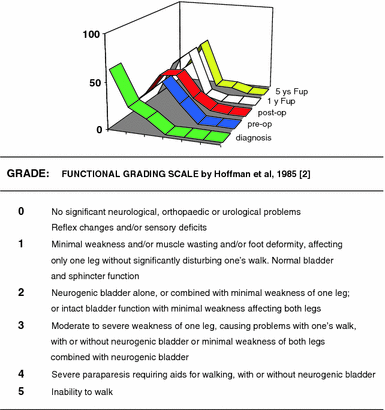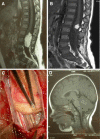Tethered cord: natural history, surgical outcome and risk for Chiari malformation 1 (CM1): a review of 110 detethering
- PMID: 21922314
- PMCID: PMC3249026
- DOI: 10.1007/s10072-011-0745-7
Tethered cord: natural history, surgical outcome and risk for Chiari malformation 1 (CM1): a review of 110 detethering
Abstract
The surgical results of this series of occult spina bifida seem better than the natural history registered in the long pre-operative period in terms of neurological deterioration. The major contribution to this result is attributed to neurophysiological monitoring that lowers the risks of permanent damage and increases the percentage of effective detethering. The present series of TCS, due to conus and filar lipoma, documents that CM1 is a really rare association occurring in less than 6% of the patients, despite the low position of conus. The detethering procedure did not influence the tonsillar position, thus excluding the correlation between the tethering and the tonsillar descent. The genetic alteration documented in a girl reinforces the hypothesis of a rare complex polymaformative picture deserving multiple procedures according to the prevailing clinical symptoms.
Figures


References
-
- Abel TJ, Chowdhary A, Gabikian P, Ellenbogen RG, Avellino AM. Acquired Chiari malformation associated with a fatty terminal filum. J Neurosurg. 2006;105(4):329–332. - PubMed
-
- Hoffman HJ, Taecholarn C, Hendrick EB, Humphreys RP. Management of lipomyelomeningoceles: experience at the Hospital for Sick Children, Toronto. J. Pediatr Neurosci. 1985;1:3–13. - PubMed
-
- Kang J, Lee K, Jeun S, Lee I, Kim M. Role of surgery for maintaining urological function and prevention of retethering in the treatment of lypomeningomyelocele: experience recorded in 75 lipomeningomyelocele patients. Childs Nerv Syst. 2003;19:23–29. - PubMed
Publication types
MeSH terms
LinkOut - more resources
Full Text Sources
Medical

